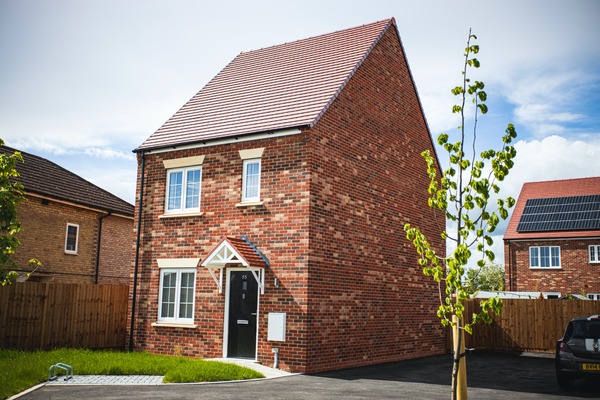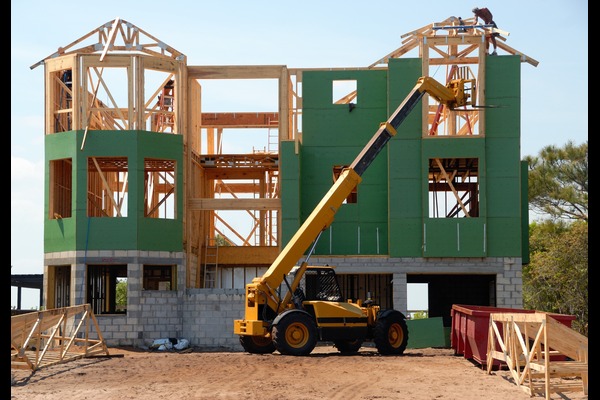News
Bridging Loans Can Help with VAT Too
At a growing pace, bridging finance is becoming a force to be reckoned with in the UK’s specialist lending market. Providing rapid access to significant sums of cash for just about any purpose, bridging loans take convenience, flexibility, and accessibility to an entirely higher level.
But even at this stage, the true versatility of bridging finance isn’t what you’d call common knowledge. You may associate bridging loans with fast-paced property purchases, but how about a bridging loan for VAT?
For commercial property investors and developers, an affordable bridging loan to pay VAT can provide a welcome lifeline at a critical juncture.
What is a bridging loan for VAT?
As you’ve probably figured out by now, bridging loans for VAT are short-term loans that can be used to pay the VAT on a commercial property purchase. As things stand right now, the vast majority of commercial property purchases (where the property is less than three years old) require a 20% VAT payment. The VAT must be paid on top of the price of the property at the time of its purchase, which can significantly elevate the costs of the transaction.
The more expensive the property, the greater the VAT outlay for the buyer.
Of course, commercial property buyers go on to claim this VAT back from HMRC at a later date. The problem is that, depending on the specifics of the case and application volumes at the time, it can take as long as three months for refunds to be actioned. During which time, the investor could be left somewhat out of pocket.
Loans and specialist credit facilities in general are frequently used by investors to cover VAT costs, but none have proven quite as flexible or affordable as the bridging loan.
How a VAT-bridging loan works
As with all bridging loans, a VAT bridging loan is offered as a short-term credit facility for a specific purpose. In this instance, the borrower is able to apply for a minimum of, say, £50,000 with no upper limits, secured on their existing property or qualifying assets. Applications can be processed and funds delivered in as little as five working days, after which the full balance is repaid on an agreed date. Bridging loans can be arranged over terms of anything from a few days to 18 months, in accordance with the preferences of the borrower.
The lender makes the money available as quickly as possible, the borrower uses it to pay the VAT, and the property purchase goes ahead. When the VAT is refunded by HMRC, the funds are used to repay the loan in full, along with any additional borrowing costs incurred. The quicker the loan is repaid, the lower the overall borrowing costs and the simpler the transaction in general.
Affordable short-term VAT loans
Some of the UK’s leading bridging specialists offer short-term loans with rates of interest as low as 0.5% per month. All with minimal additional borrowing costs, arrangement fees, and general levies. Just as long as the balance is repaid in accordance with the loan agreement, bridging finance can be uniquely cost-effective.
Along with near-immediate access to the funds required, a key benefit of bridging finance is the elimination of credit checks. If the applicant is able to provide sufficient collateral to cover the loan, there’s no requirement to undergo a credit check or provide proof of income. No deposits, no delays, and no unnecessary complications, ideal for covering VAT costs when time is a factor.
Just be sure to consult with an independent broker before penning your application, which will help ensure you find the best deal from an extensive panel of specialist lenders.
A Brief History of Money
We love it when we’ve got it, and we lament it when we haven’t. In any case, it’s rare to come across an individual who doesn’t appreciate the value of money.
But have you ever given thought to where the coins and notes in your pocket come from?
By this, we’re not talking about those oh-so-sophisticated machines down at the Royal Mint. Instead, we’re talking about the actual historical origins of money.
Here’s a brief overview of how the whole thing got started:
Trade via barter
Before money was invented, all business transactions had to take place by way of bartering. It was the case of swapping commodities of equal value with interested parties, which, for obvious reasons, was an imperfect and complicated system. Particularly given how different people assign different values to different commodities.
Eventually, it became clear that some rudimentary form of currency needed to be introduced.
Something that satisfies six essential requirements:
- Scarceness: For a form of currency to be viable, it has to be something that isn’t readily available. Rarity has always been a desirable trade for materials and commodities.
- Counterfeit proof: It’s also useless to have a form of currency that’s easy to duplicate. If you could print 100% authentic cash at home, you probably would.
- Portability: Trading commodities for commodities is one thing, but it’s not as if you can carry your livestock, your car, or your home around in your pocket. Hence, portability is key.
- Durability: Money tends to be exposed to pretty harsh treatment during its lifespan, calling for the use of a robust material to maximise durability.
- Divisibility: One of the biggest problems inherent in the bartering system is the fact that most standard commodities and assets aren’t divisible. Owing change in the form of half a goat presents a variety of problems.
- Desirability: Of course, for a form of currency to be deemed viable, it also needs to be in some way desirable. Precisely why most forms of historic currency have been rare, sought-after, and generally quite pretty to look at.
The dawn of modern currency
At some point in time, common sense brought about the use of precious metals to make coins. At the very dawn of modern currency, it was the quantity of the precious metal used to create the coin that determined its value.
Evidence suggests that the first coins produced as a form of currency emerged approximately 600 years ago in ancient Turkey. The Greeks followed suit approximately 100 years later, around the same time as the Chinese. Coins were crafted and introduced as a form of currency by the Romans after another century or so, which was around the same time the Celts in England introduced coin-based currency.
Denominations, materials, and manufacturing techniques may have evolved beyond recognition, but the same basic premise of exchanging coins for commodities underpins the way the world does business today.
The future of money
Some economists believe it’s only a matter of time until cryptocurrency takes over and wipes physical money off the face of the earth. A distinct possibility, but something that’s unlikely to happen in our own lifetimes.
Cryptocurrencies like Bitcoin may have enormous potential, but for the time being, they are simply too volatile and controversial to mount a global takeover. For a variety of reasons, people in general simply aren’t ready to permanently quit the cash-based currency system just yet.
So while you can expect to hear a lot more about cryptocurrency going forward, you can rest assured that the coins and notes in your pocket will hold their value for now.
Commercial Finance Explained
If you run a business of any kind, there’s a good chance you’ve heard of commercial finance. There’s also an equally strong chance you’re not entirely sure what the term refers to.
In the sections below, you’ll find a concise overview of the functions, logistics, and potential applications of commercial finance solutions.
Commercial finance definition
Roughly defined, the term “commercial finance” refers to an extensive range of funding solutions that are offered specifically for business purposes. Commercial finance can be provided as a long-term or short-term loan, typically secured in all instances against the borrower’s business assets.
In accordance with the value of the collateral provided to cover the loan, commercial finance may be offered with no specific upper limits in terms of loan value.
What is commercial finance used for?
Commercial finance can be used to cover almost any business expense whatsoever. A typical commercial finance loan could be used by a business to take advantage of time-limited investment opportunities, introduce new products and services, expand into international markets, or perhaps relocate to a more appropriate location.
The idea is that commercial finance provides fast and affordable access to the working capital a business needs to grow, evolve, and diversify. Particularly for small and medium-sized enterprises (SMEs) with limited cash reserves, commercial funding solutions can offer an invaluable lifeline.
Commercial property finance explained
As the name suggests, commercial property finance is a specialised funding solution for property purchases and developments. Commercial property finance may be sought when a business needs to expand, improve, repurpose, or even build a new property from scratch.
Whereas most property development loans are secured exclusively on existing homes and business premises, commercial finance can be secured on a wide variety of assets. Flexibility varies significantly from one lender to the next, though it may incorporate assets such as IT equipment, vehicles, artwork, jewellery, and so on.
How to finance a commercial property
For today’s business owners, there are dozens of options to explore for financing commercial properties. Suitability will be determined by the requirements, preferences, and financial position of the applicant, with short- and long-term solutions to consider.
These include:
- Specialist commercial finance loans.
- Development finance solutions.
- Business credit cards and loans.
- Bridging finance.
- Crowd-funding and P2P lending.
- Commercial mortgages.
- Invoice factoring.
- Business overdrafts.
These are just a few of the funding solutions available for financing commercial property.
Which commercial finance option should you choose?
Contrary to popular belief, no commercial finance option is inherently ‘better’ than any other. There are significant differences from one product to the next, which should be taken into account before submitting an application.
In order to help your broker find your ideal commercial finance option, it’s a good idea to ask yourself a series of questions beforehand:
- What exactly do you need the money for?
- How quickly will you be able to repay the loan?
- Have you carefully considered all applicable borrowing costs?
- What kind of collateral can you provide?
- How much can you afford to repay monthly?
- Have you considered the risks of secured borrowing?
- Will your business type or sector influence your eligibility?
Each of these considerations will help your broker pinpoint your perfect financial product from an extensive network of lenders. Speaking of which, the importance of commissioning a whole-of-market comparison on behalf of your business cannot be overstated.
Each of these considerations will help your broker pinpoint your perfect financial product from an extensive network of lenders. Speaking of which, the importance of commissioning a whole-of-market comparison on behalf of your business cannot be overstated.
In the right place and at the right time, commercial finance can be an absolute godsend. It’s simply a matter of establishing your needs, knowing where to look, and enlisting expert support as early as possible.
Can I Rent Out My Home to Buy Another?
How does renting a home affect property purchase eligibility? What’s the deal with let-to-buy finance, and how difficult is it to qualify for let-to-buy mortgages?
Perhaps the best way to get to grips with this surprisingly common scenario is to consider the let-to-buy concept in a typical working example.
Let-to-buy in practice
Let’s say you and your partner currently occupy a property you purchased five years ago at a price of £200,000. Over the years, the market value of the property has increased to approximately £350,000. For whatever reason, you’ve decided to relocate, and you’ve got your eye on a smaller property on the market for around £160,000. You’d like to maintain ownership of your current property and let it out, but you’re concerned that doing so may affect your ability to get a new mortgage.
You have plenty of equity tied up in your property, but you have no idea where to start when it comes to investing in a second property.
What next?
While taking ownership of two properties by way of a second mortgage can be a little complex, it’s more than feasible.
Known as a “let-to-buy” transaction, it’s a case of converting your current home into a rental property and purchasing a second property to call home. The mortgage on your original property then becomes a buy-to-let mortgage, which you will cover with the income you receive from your subsequent tenants. In the meantime, a new mortgage is required to cover the costs of your new home, which you will pay with your income and/or savings in the usual way.
In order to qualify for a buy-to-let mortgage, for which you’ll need to transform your current home into a rental property, lenders typically expect the property to generate a monthly rental income of 125% of the required monthly mortgage payment. If the monthly mortgage payment was £1,000, this would mean you’d need to charge a monthly rent price of at least £1,250.
If you’re able to comfortably cover the buy-to-let mortgage repayments by way of your tenants’ monthly rent payments, you’ll almost certainly qualify for the loan you need.
Mortgaging your new home
Your previous home has been converted into a rental property, which, under the terms of a buy-to-let mortgage, is no longer habitable for you personally. Hence, you need a place to live; you also need a new mortgage.
The process of obtaining a mortgage on a new property when letting out a previous property is similar to any standard mortgage application. Assuming the lion’s share of the rental income on your previous home is used to pay your buy-to-let mortgage, it won’t have much impact on your official overall income.
Instead, your eligibility will be assessed in the usual way. Your combined household income, any outstanding debts and commitments, your credit score, employment history, CCJs, and so on Simply owning and renting out a second property won’t necessarily influence your subsequent mortgage application.
Independent support and advice
Due to the inherent complexities of the let-to-buy process, it’s important to seek independent support and advice at the earliest possible stage. Along with helping establish your eligibility for such a move, an independent adviser or broker will help you find the best funding solution available.
It’s important to remember that traditional mortgages aren’t the only home finance solutions available. Bridging loans, auction finance, and specialist secured loans should also be considered. Likewise, an imperfect credit score may bring additional complications into the equation, but it doesn’t necessarily count you out of the running.
I’m Too Old for Property Finance!
Living as a pensioner with a great deal of equity tied up in your estate represents the ultimate catch-22 situation. You may be sitting on a small fortune in combined assets, but this doesn’t mean you’ll be lent a hand when in need of financial support.
Or at least, not by the vast majority of major lenders.
The problem with property finance for pensioners
In a typical scenario, you may own a house worth more than £1 million, land with a market value of £300,000, and plenty more. You’re 72 years old and have an average annual income of around £35,000. You’ve got your eye on a £700,000 property you’d like to buy and move into; you’ve even got around £200,000 available in cash.
Unfortunately, the only two things the average high-street lender is interested in are your age and your income. A 72-year-old application with a £35k per-year income is not coming close to satisfying the qualification criteria for this kind of residential mortgage.
Exploring the alternatives
On paper, the figures above simply don’t add up. After all, if the prospective borrower owns multiple assets that vastly exceed the cost of the loan, why wouldn’t they qualify for an affordable mortgage?
This is just one example to illustrate the problems inherent in property finance for pensioners. Not to mention the importance of looking beyond the High Street to explore the alternative options available.
Even if such a candidate were able to qualify for a mortgage, they’d almost certainly be ‘penalised’ with elevated interest rates and higher overall borrowing costs. This, is despite their incredibly strong financial position and wealth. In order to avoid paying over the odds unnecessarily, such cases should be taken directly to the doors of specialist lenders.
Bridging loans for over-65s
In instances like these, conventional mortgages are not the only option. Neither are they the most accessible, affordable, or convenient option. When sitting on this kind of equity, there’s nothing to gain by complicating things with long and drawn-out mortgages. Or, for that matter, wasting time on applications guaranteed to be rejected.
As an alternative, bridging loans represent a fast, flexible, and affordable way to borrow substantial amounts of money on the basis of collateral. For pensioners in particular, bridging loans can offer a welcome lifeline for covering short-term gaps in their financial dealings.
In this particular scenario, the individual in question could use their current property to secure the funds needed to buy their new home. Bridging loans are typically available up to a maximum of 75% of the property’s value, meaning around £750,000 is accessible for the applicant. The new home is purchased, the buyer’s previous home is sold a little further down the line, and the bridging loan is repaid in one lump-sum payment.
As an alternative, bridging loans represent a fast, flexible, and affordable way to borrow substantial amounts of money on the basis of collateral. For pensioners in particular, bridging loans can offer a welcome lifeline for covering short-term gaps in their financial dealings.
In this particular scenario, the individual in question could use their current property to secure the funds needed to buy their new home. Bridging loans are typically available up to a maximum of 75% of the property’s value, meaning around £750,000 is accessible for the applicant. The new home is purchased, the buyer’s previous home is sold a little further down the line, and the bridging loan is repaid in one lump-sum payment.
Comparing bridging loans for pensioners
Due to the specialist nature of bridging loans for pensioners, it pays to work with a specialist broker. Consult with an independent specialist and organise a whole-of-market comparison, incorporating dozens of dynamic lenders beyond the UK High Street.
It can also be helpful to use an online bridging loan calculator in order to get a good idea of the various options available.
New Builds – Why So Many Complaints?
Taking the plunge and buying your dream home shouldn’t turn into an unmitigated nightmare. Particularly if you’re buying a new-build property, which you’d expect to be in mint condition inside and out. Nevertheless, new-build complaints are stacking up from disgruntled buyers across the UK. In fact, new-build home complaints recently hit an all-time high.
Disappointment with a new home isn’t a case of simple inconvenience and frustration. For those affected, it can be a distressing and costly situation to face, often with very little help available.
Some builders and developers hide terms and conditions in contracts that negate responsibility, while others simply ignore letters and calls to their offices. Often, they are under the knowledge that if they wait long enough, the buyer’s warranty will expire, assuming they were provided with one in the first place.
In any case, the average homeowner simply doesn’t have the time, the expertise, or the energy to chase and challenge builders when things go wrong. Complaints about new builds are flooding local and national government offices like never before, but is there really anything that can be done about it?
Or, more importantly, why is it happening in the first place?
No Isolated Incident
Research from the Homeowners Alliance suggests that those filing complaints about new-build homes aren’t in the minority. For whatever reason, there’s been a distinct uptick in the number of people reporting serious defects with their new homes shortly after purchasing them. To such an extent that less than two-thirds of those who buy and move into new homes are happy with the way initial imperfections are addressed by their respective builders and developers,
Even more alarmingly, the number of new homebuyers reporting defects of any kind after moving into a new property stood at 93% in 2015. As of 2018, the number of buyers filing complaints about new-build homes had hit an astonishing 99%.
All of which suggests that next to no buyers are comprehensively satisfied with their newly built homes when they move in.
What’s more, evidence also suggests that buyers aren’t simply filing new-build property complaints about basic snags and minor shortcomings. Instead, they’re talking about the kinds of major structural issues that pose a direct threat to their health and safety. The problem is that even when such issues are reported, they’re often addressed with little sense of urgency or priority.
Experience and expertise
As far as some industry experts are concerned, the issue may be the result (at least in part) of a widespread lack of experience and expertise among builders. Generally speaking, the UK has a global reputation for the quality of its construction workers. However, some argue that, as it takes less than two years of training to become a qualified bricklayer, plasterer, or tradesperson in the UK, there are far too many builders in business with very little experience behind them.
In addition, there’s absolutely no legal requirement for builders in the United Kingdom to obtain a licence to offer their services. They’re able to sign up on a voluntary basis with registered bodies like the NHBC or the Federation of Master Builders, but there is no requirement for them to do so. It’s a legal requirement for all properties constructed to meet certain health, safety, and practicality requirements, but carrying out such checks isn’t always easy for potential buyers inspecting the properties.
For the time being, therefore, there’s little that can be done on the part of the buyer other than to organise meticulous and intensive inspections prior to purchasing a home. Where problems are encountered after the purchase, developers or builders are required to fulfil their contractual obligations or may be brought before the courts for legal proceedings to take place.
Repayment of bridging finance with another bridging loan
Our client was looking to borrow against an inherited property to repay an existing bridging loan secured on his own property which was arranged to consolidate debt.
The repayment strategy for the initial 12-month bridging loan had failed as the estate agents were unable to sell the property in the intended timeframe, hence the need to repay this loan as it had come to the end of its term and the current lender was needing repayment. Our client also wanted to raise additional funds to pay for medical costs and to repay money owed to family members which had accumulated during the term of the current loan, following a bereavement.
Finance raised on an inherited property
The inherited property was unencumbered and had to be transferred into our clients name as part of the transaction. UK Property Finance were able to arrange a new loan for our client whilst we used our vast industry contacts to keep in constant communication with their existing lender and solicitors to ensure they remained abreast of the situation and knew the client was doing their utmost to arrange repayment of the loan.
On agreement of the new loan the solicitor provided an undertaking to the lenders solicitors confirming that when the new loan was advanced, the inheritance duty was paid and our clients interest became listed on the property deeds as owner. The clients’ solicitor also confirmed that they would ensure the remaining advance was used to repay the existing bridging loan secured on our clients current property and the medical bills accrued.
The exit or repayment of the new bridging loan was still via sale and due to the extended timeframe agreed our client was able to sell his property without further stress and once the sale was complete our client took up residence in the inherited property which was now owned free of any loans.
What’s the Best Way to Buy Land?
Buying land for the first time can be a daunting and challenging process. Even if you’re more than familiar with traditional property procurement, buying land is an entirely different experience. From deciding where to buy land in the first place to finding the perfect land loan for your needs, there’s much to take into account along the way.
As for the ‘best’ way to buy land, the short answer is simple – as strategically as possible. In terms of where you buy the land, why you’re buying it and your chosen land financing option, it’s entirely up to you. But there are nonetheless some universal pointers to consider, which could help you make the right decision.
Examples of which include the following:
- Your main reason for buying the land
You could be looking to buy a plot of land to sell at a later date for a profit. Alternatively, you could be considering building your dream home, or even an estate of properties to rent or sell. Your ultimate intentions for the land should be factored into every decision you make from start to finish.
- The different types of land available
The type of land you buy will determine if and to what extent you can do anything useful with it. So rather than just buying a plot you liked the look of in a high-demand area, it’s worth first considering its usefulness and versatility or otherwise.
- Funding solutions
Addressing the issue of how to finance land investments, there are myriad options to explore. From specialist land loans to development finance to bridging loans to agricultural loans, it depends on your current financial circumstances and intentions for the land.
- Compare the market
How much is agricultural land per acre to buy? How long is a piece of string! The answer will vary significantly from one area to the next, in accordance with both demand and the capacity for the land to generate healthy returns. Hence, it can be useful to compare the market and consider a variety of locations where possible.
- Consider planning permission requirements
Assuming you plan on developing the land you purchase in some way or another, it’s worth factoring in any planning permission requirements you may need. Depending on the type of land you purchase, it could be easy, difficult or impossible to receive formal permission to develop or build on it. Always better to find out before you go ahead and commit to the purchase.
- Organise a reliable survey
As with any property you intend to purchase, it’s important to have the land meticulously and professionally inspected from top to bottom. From flood risks to boundaries to potential hazards of all shapes and sizes, it’s impossible to evaluate the value and potential of a plot of land with a fleeting glance.
- Focus on future demand
Rather than considering what the plot of land is worth today, think carefully about its ongoing growth potential. For example, if the area is scheduled to benefit from improved public transport links or the development of an industrial park in the near future, this could have a marked impact on the value of your investment.
- Secure professional representation
Last but not least, it always pays to have the experts on your side when considering an important investment. So rather than going it alone, secure professional representation from the earliest possible stage from a reputable independent specialist. Even if you know what you’re doing, an additional objective viewpoint could prove invaluable.




 0116 402 7982
0116 402 7982







